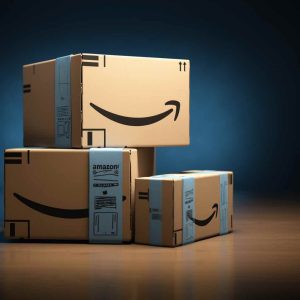Selling on Amazon is far from perfect, but it’s impossible to ignore for most brands going into 2023. Ignoring this platform could be a crucial mistake. This article aims to highlight why.
Over 50% of All Online Retail Sales Occur on Amazon.com
The success of Amazon's third-party seller services is impossible to ignore; in the fourth quarter of 2022, 36.34 billion U.S. dollars in net sales were generated, an increase of 24 percent compared to the previous year. Most of these 59 percent sales can be attributed to third-party sellers.
This success is especially evident in the company's yearly net revenues, which have skyrocketed recently. In 2021, Amazon's third-party seller services totaled 103.4 billion dollars, a growth of 23 billion dollars from 2020. This is mainly due to the sales generated from special days like Black Friday, Prime Day, and Amazon's Summer Sale.
The coronavirus pandemic has further highlighted the importance of Amazon as a platform, with many small and medium businesses turning to online sales to survive.
At this point, it’s impossible to ignore this behemoth of a platform. For most brands, yesterday was the best day to start selling on Amazon.
Leverage Massive Pre-existing Qualified Traffic
Here’s the reality…
You’ll never be able to match the traffic to your website that you can get from Amazon.
Of course, this isn’t possible the first day you list your products, but over time, and if done correctly, Amazon has a tsunami wave of the most qualified traffic ready with credit cards in hand.
In May 2022, Amazon.com had a massive increase in their total desktop and mobile visits, rising to 2.4 billion visits from the previous month's 2.3 billion. This e-commerce property is by far the most visited in the United States.
E-commerce is a rapidly expanding industry in the United States. According to reports from the third quarter of 2021, online retail sales accounted for 13 percent of the nation's total retail sales, bringing in over 215 billion U.S. dollars.
While Amazon has its advantages, there are also some downsides to using the platform instead of creating your website. We'll explore those in more detail at another time.
Unmatched Conversion Rate Compared to Your Online Store
If you come from the Shopify world, you know that your store's 1-3% conversion rate is average. Anything over 3%, and you’ll be a happy camper.
What If I said that the average conversion rate for an Amazon product is 10-15%?
Yes, you read that right…
Some of the products we sell are in the 25-30% range.
It’s only getting more expensive to acquire new customers for your online store. With IOS14 and generally far more competition on popular ad platforms like Facebook and Google, many brand owners are at a loss for what to do.
If you manage to get your products visible organically in the Amazon search results, Amazon takes care of the rest. This is a very simplified take…
This is taking into account that your title, bullet points, description, A+ content, keywords, and price are all dialed in. This is both an art and a science. Like how Facebook and Google change their algorithms constantly, so does Amazon. Staying on the cutting edge of what’s working today is one of our most significant challenges as Amazon sellers. The reward is worth the effort.
Increased Trust - Tide That Raises All Ships
Even if physical retail or your direct-to-consumer website are your primary sales channels, showing up on Amazon will garner more trust and brand recognition for customers.
One of the first things a potential customer does when stumbling across your website is open a new tab and see if you’re on Amazon.
Just being on Amazon increases the customer's trust level because they know that Amazon won’t just take anyone on their platform.
Summary
Some brand owners believe that being on Amazon somehow cheapens their brand. They think customers will view them in a less flattering light because they “conformed” and gave in to the big bully platform. Understandably, some folks don’t want their name associated with a “discount store.” I will push back slightly and ask that you explore and thoroughly understand the potential opportunity lost by not selling on Amazon. It doesn’t make sense for 100% of brands out there. However, a large chunk of brands are leaving a tremendous amount on the table, especially as Amazon continues to grow and raise its percentage of Prime members yearly.
For Earth Rated, we were able to help make this tedious yet necessary channel their most lucrative.
See how we made their Dog Poop Bags the #1 best-seller in the pet supplies category!




